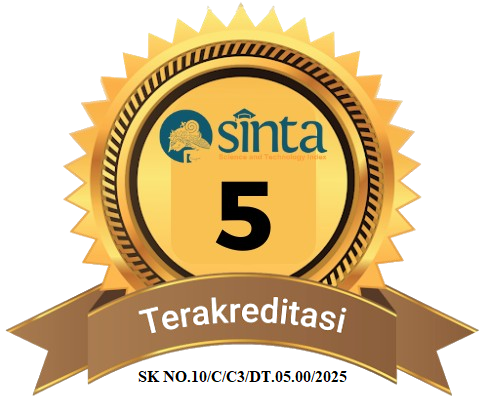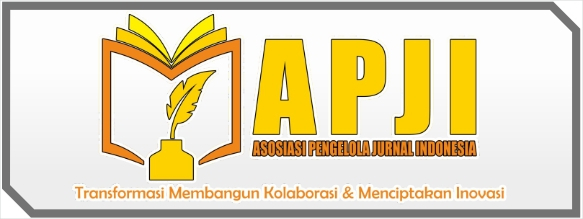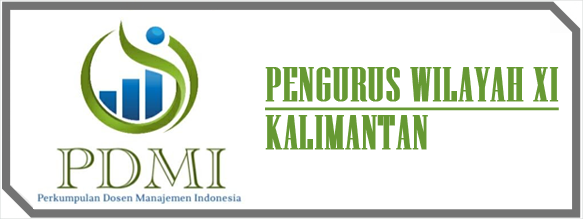INCREASING ECONOMIC GROWTH THROUGH GREEN AGRICULTURE IN INDONESIA
DOI:
https://doi.org/10.62394/projmb.v3i1.85Keywords:
Pesticides, Chemical fertilizers, Economic growth, Environmental pollutionAbstract
Economic growth is the primary condition of economic development. With growth, investment, increased employment opportunities, and equity are possible. Many factors are interconnected and affect economic growth. However, rapid economic growth in Indonesia has also caused environmental damage. This study aims to study the factors that affect the level of environmental pollution in Indonesia and the factors that have the most significant influence. This study used a multiple regression model. The results showed that the GDP variable (X1) and rice production variable (X2) had a significant simultaneous relationship with environmental pollution (Y), with an F value of 3.694 and a significance level of 0.032. The t-test results show that rice production (X2) has a significance value of 0.039, or below 0.05. indicates that rice production in Indonesia contributes significantly.
Downloads
References
Amrillah, D., Kusratmoko, E., & Supriatna, S. (2018). Model Spasial Perubahan Penggunaan Lahan dan Pengaruhnya Terhadap Kebijakan Swasembada Padi. Majalah Geografi Indonesia, 32(1), 33. https://doi.org/10.22146/mgi.31911
Anugrah, I. S., & Wardana, I. P. (2008). Gagasan Dan Implementasi System of Rice Intensification ( SRI ) dalam Kegiatan Budidaya Padi Ekologis ( BPE ) halnya dengan berbagai inovasi telah berkembang dan dihasilkan untuk pertanian . Beberapa upaya konkrit melalui program-program pertanian telah t. Analisis Kebijakan Pertanian, 6(1), 75–99.
Divita, G. (2004). Natural Resources Dynamics: Another Look. Agricultural & Natural Resource Economics, null, null. https://doi.org/10.2139/ssrn.588743
Divita, G. (2006a). Exhaustible Resources and Secondary Materials: A Macroeconomic Analysis. Macroeconomics EJournal, null, null.
Divita, G. (2006b). Natural Resources Dynamics: Exhaustible and Renewable Resources, and the Rate of Technical Substitution. Resources Policy, 31, 172–182. https://doi.org/10.1016/J.RESOURPOL.2007.01.003
Elias, E., Seifu, W., Tesfaye, B., & Girmay, W. (2019). Impact of land use/cover changes on lake ecosystem of Ethiopia central rift valley. Cogent Food & Agriculture, 5(1). https://doi.org/10.1080/23311932.2019.1595876
García-Barragán, J. F., Eyckmans, J., Sandra, & Rousseau. (2018). The small open circular economy.
García, J. F., Rousseau, S., & Eyckmans, J. (2017). On the Economics of Recycling and Small Open Circular Economies.
Irvan, Permata Mhardela, & Bambang Trisakti. (2014). Pengaruh Penambahan Berbagai Aktivator dalam Proses Pengomposan Sekam Padi (Oryza sativa). Jurnal Teknik Kimia USU, 3(2), 5–9. https://doi.org/10.32734/jtk.v3i2.1501
Kardung, M., Cingiz, K., Costenoble, O., Delahaye, R., Heijman, W., Lovrić, M., van Leeuwen, M., M’barek, R., van Meijl, H., Piotrowski, S., Ronzon, T., Sauer, J., Verhoog, D., Verkerk, P. J., Vrachioli, M., Wesseler, J. H. H., & Zhu, B. X. (2021). Development of the circular bioeconomy: Drivers and indicators. Sustainability (Switzerland), 13(1), 1–24. https://doi.org/10.3390/su13010413
Kasim, M., & Rozen, N. (2009). Teknik Budidaya Tanaman Padi Metode SRI (The System of Rice Intensification). In 29 September 2006.
Lal, R. (2018). Adaptation and Mitigation of Climate Change by Improving Agriculture in India. Climate Change and Agriculture in India: Impact and Adaptation, 217–227. https://doi.org/10.1007/978-3-319-90086-5_17
Paminto, A., Karuniasa, M., & Frimawaty, E. (2022). Potential Environmental Impact of Biodiesel Production from Palm Oil using LCA (Life Cycle Assessment) in Indonesia. Jurnal Pengelolaan Sumberdaya Alam Dan Lingkungan (Journal of Natural Resources and Environmental Management), 12(1), 64–71. https://doi.org/10.29244/jpsl.12.1.64-71
Pati, R. K., Vrat, P., & Kumar, P. (2006). Integrated chain analysis of recycled vis-à-vis wood pulp paper industry: an Indian manufacturer viewpoint. International Journal of Value Chain Management, 1, 44. https://doi.org/10.1504/IJVCM.2006.009023
Priyagus. (2017). Pertumbuhan Ekonomi dan Degradasi Lingkungan Air di Wilayah Kalimantan dan Indonesia Analisis Enviromental Kuznet Curve ( EKC ). FEB-UNMUL : Samarinda., 1, 223–231.
Sangadji, Suwandi S., Febriyani E. Supriatin, Iin Marliana, Afkar, Andi Paerah, and Firdaus Y. Dharta. 2022. “ Metodologi Penelitian.” OSF Preprints. July 5.osf.io/ywemh
Sangadji, S. S. (2023). Management research methods. PROCURATIO: Jurnal Manajemen & Bisnis, 2(1), 43–44.
Sharaai, A. H., Muhammad, K. I., & Wah, Y. G. (2019). Social impact evaluation of tea production using social life cycle assessment (s-lca) method in cameron highlands, pahang, Malaysia. Planning Malaysia, 17(2), 215–224. https://doi.org/10.21837/pmjournal.v17.i10.642
Vita, G. (2007). Exhaustible resources and secondary materials: A macroeconomic analysis. Ecological Economics, 63, 138–148. https://doi.org/10.1016/J.ECOLECON.2006.10.004




















